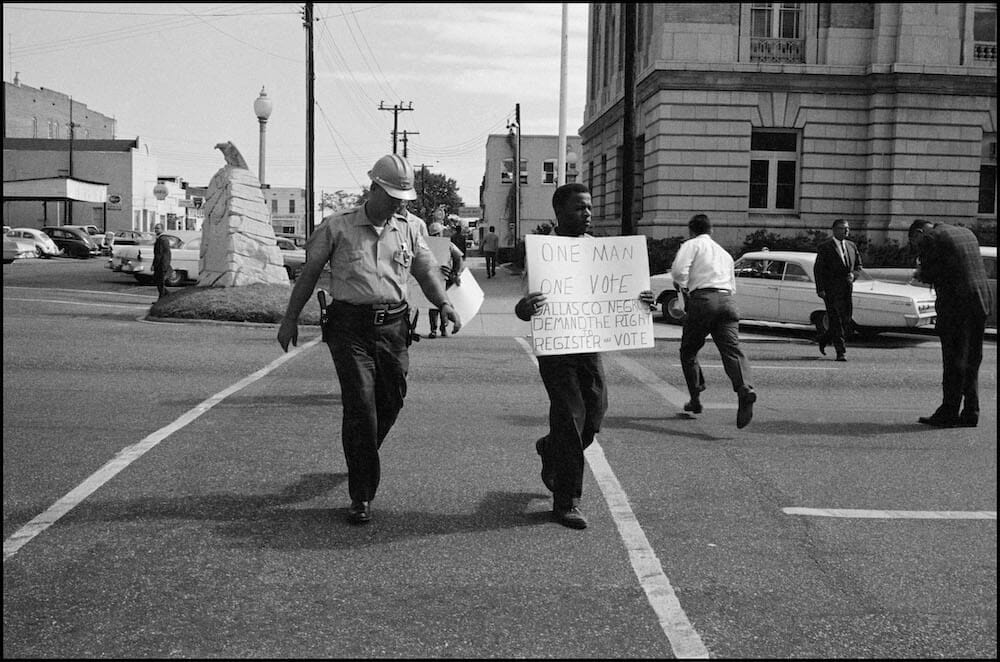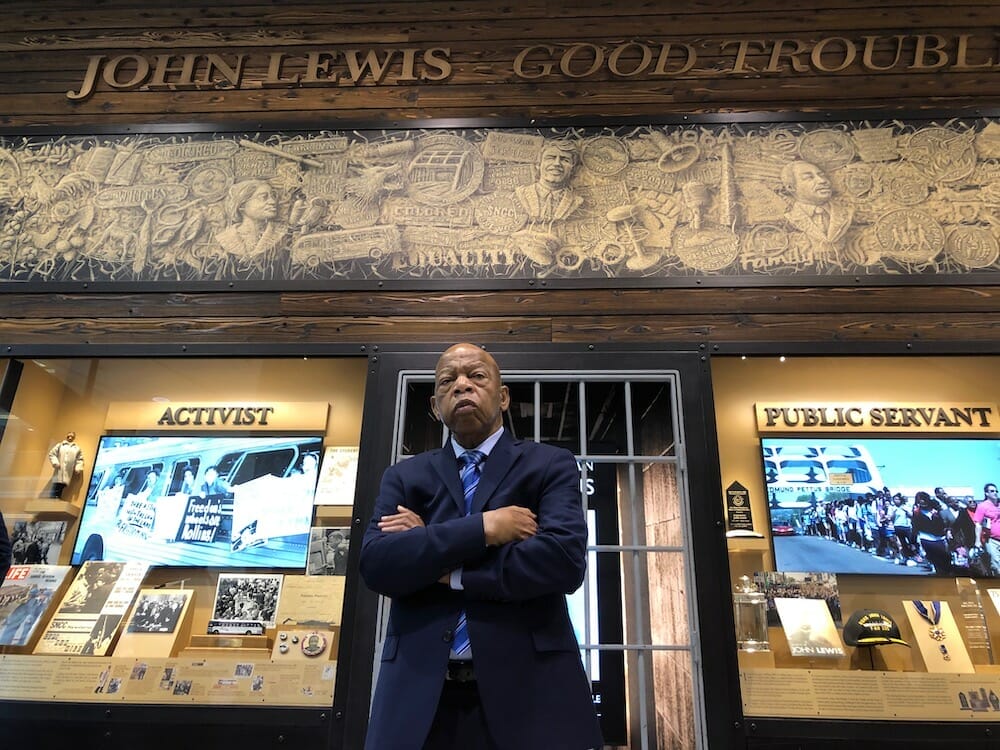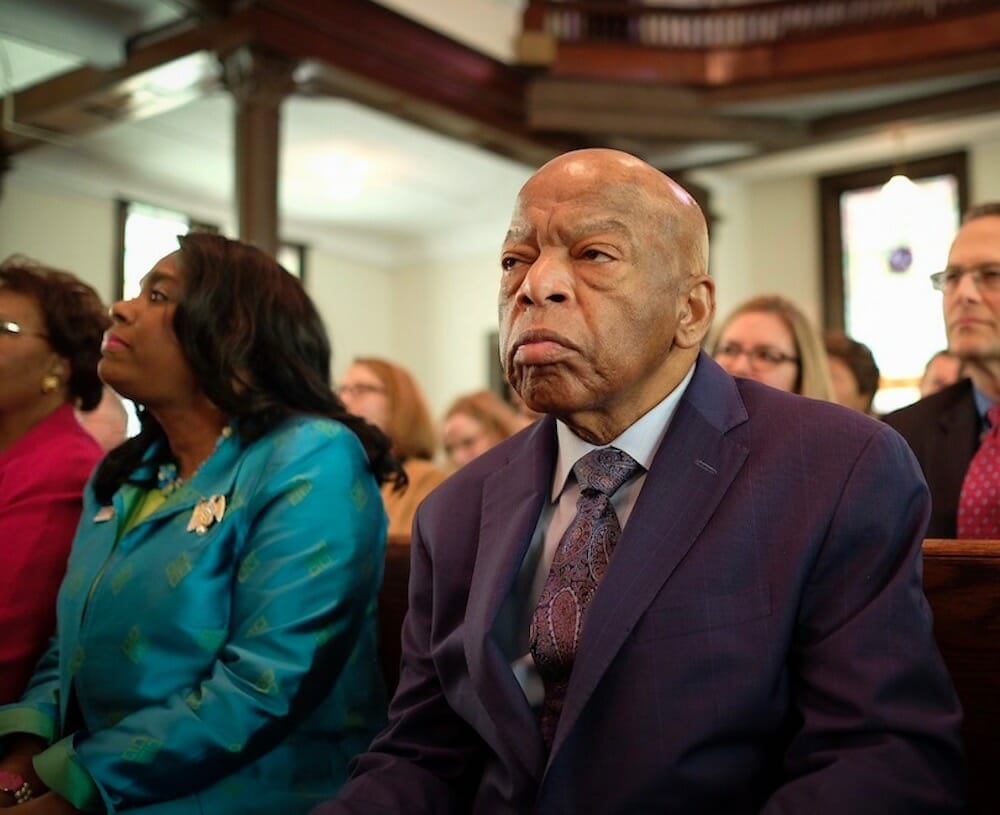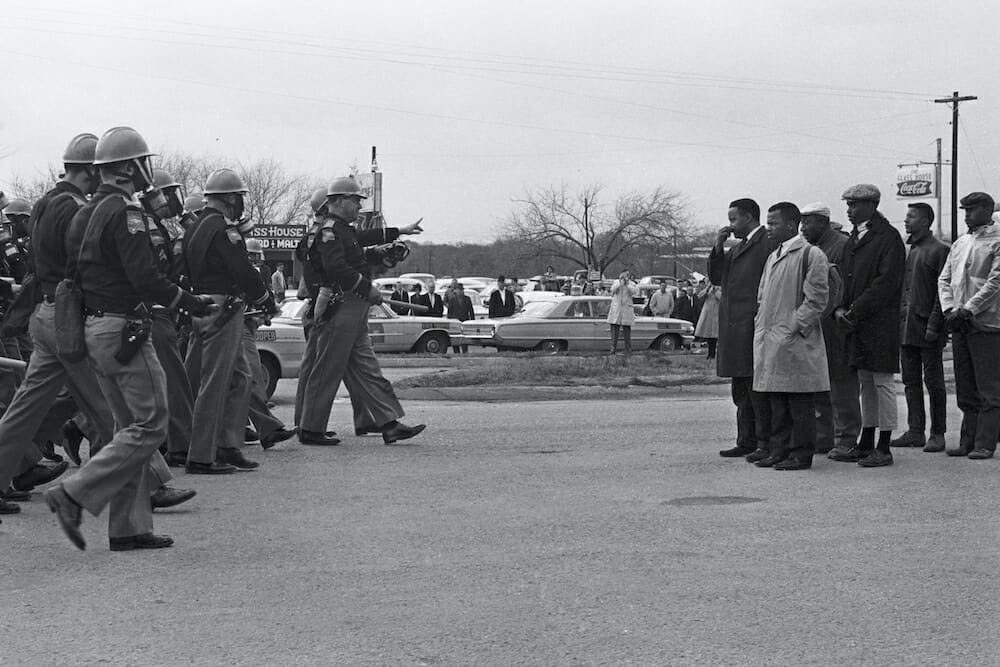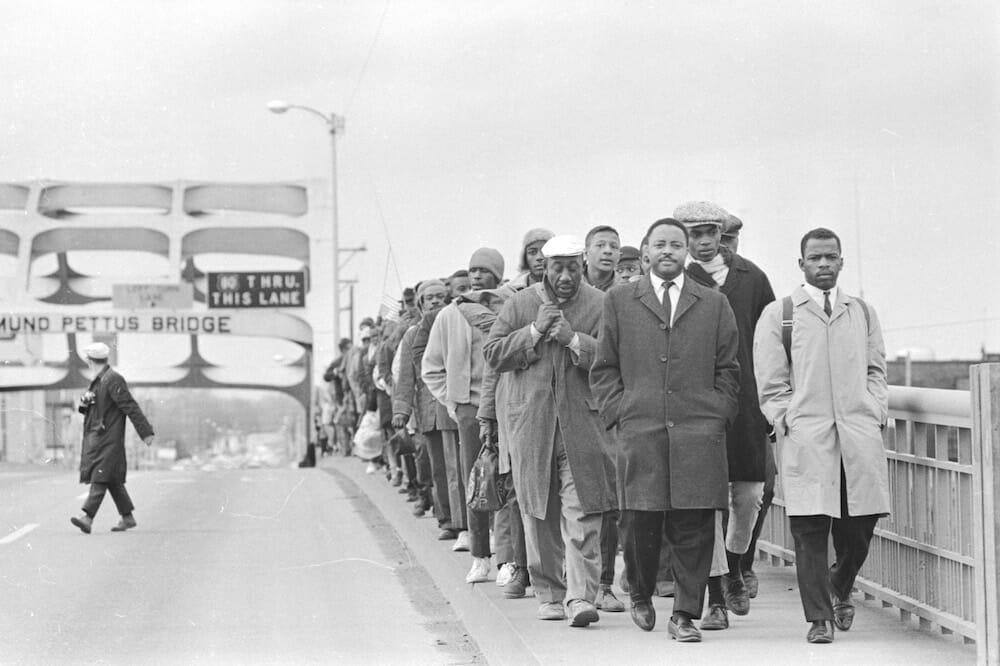John Lewis Good Trouble transitions between the past and present often. The date and location are always shown on the screen. We go through the years of the Civil Rights Movement with John Lewis and the documentary — through multiple pivotal events.
As Lewis talks about his experiences, the corresponding event fills the screen in black and white. There are clips of sit-ins in Nashville and training for these sit-ins. We also see the first Selma to Montgomery march. As the activists march towards the bridge, we see a sea of blue - Alabama state troopers - all wearing gas masks. They slowly begin to advance on the activists pushing them back forcefully. We can hear shouting and the screen fills with smoke and chaos. In another piece of footage, a young man is heard saying, “You don’t have to beat us to arrest us, arrest us if we’re wrong, don't beat us” as the police handle them with unnecessary force. While none of the clips are too gruesome, seeing the harsh treatment was difficult to watch but still extremely necessary, in this writer’s opinion.
As we are shown the archival footage, John Lewis is also watching them along with us. Throughout the film, he gives commentary on certain parts. In one image, he points out his seatmate on one of the Freedom Rides. Lewis also mentions how there are some pieces of footage he had never seen before either.
After we see the struggle they went through to be able to get Black people to vote in the past, we jump forward and see the recent voting struggle. News clips from the 2016 election are shown as people describe extremely long lines, waiting for hours, and limited voting polls.
The film portrays all sides of John Lewis
Lewis’s role as a civil rights activist is not the only part of him we see. We see him speaking at multiple rallies and churches. Each time he is just as passionate as the next, and the crowd is always overjoyed to hear him. When he tells one crowd to “Get in good trouble, necessary trouble,” the cheers grow louder.
The documentary also shows the lighter side of Lewis. He makes jokes, dances to Pharrell, and loves retelling the story about preaching to chickens. We even get to see his collection of chicken figurines! When not at rallies, we see him as he feeds kittens, reads the newspaper, and has his house filled with a multitude of artwork from Black artists.
John Lewis Good Trouble also tells America’s story
By transitioning back and forth between the Civil Rights Movement and now, the parallels are hard to ignore. We see moments from the march across the bridge in Selma in 1965, 1985, 2000 2015, and 2019. Each time people hold hands or link arms as they cross together.
This documentary includes many people aside from John Lewis—his fellow politicians, his friends, and activists from the Civil Rights Movement, his family, and more. We get to hear not only how they view Lewis and his work but also how his works have allowed them to be where they are today.
With Lewis’s recent passing, this documentary can feel a bit bittersweet, especially when he says, “As long as I have breath in my body I’ll do as I can.”
In our current climate, this film is a must-watch for those who wish to stay educated about the fight against systemic racism. People who want to learn more about John Lewis and his works, both in the past and recent years, will also enjoy this film. Those that do not enjoy politics or learning about social movements will want to take a pass.
HIGHLY RECOMMENDED
Nominate this for The Picture This Post BEST OF 2020???
Click Readers' Choice
Vote Securely! Vote Privately! And Make Your Vote Count-- as all voting should be!!
Length: 96 Minutes
Director: Dawn Porter
Produced by
| Erika Alexander | ... | producer |
| Ben Arnon | ... | producer |
| Katy Barksdale | ... | co-producer |
| Dori Begley | ... | executive producer |
| Summer Damon | ... | supervising producer |
| Patrick de Visscher | ... | associate producer |
| Amy Entelis | ... | executive producer |
| Stuart Ford | ... | executive producer |
| Alexandra Hannibal | ... | Senior Producer |
| Brook Holston | ... | Post Production Producer |
| Gideon C. Kennedy | ... | Archival Producer |
| Laura Michalchyshyn | ... | producer (produced by) |
| Dawn Porter | ... | producer (produced by) |
| Katie Schwartz | ... | line producer |
| Courtney Sexton | ... | executive producer |
| Jeff Skoll | ... | executive producer |
| Rachel Traub | ... | executive producer |
| Diane Weyermann | ... | executive producer |
Music by
| Tamar-kali | ||
Film Editing by
| Jessica Congdon | ||
Sound Department
| Christopher Barnett | ... | re-recording mixer / sound designer |
Camera and Electrical Department
| Andy Kuester | ... | assistant camera: Washington, DC |
| Josh Saideman | ... | camera operator |
| Yusuke Sato | ... | assistant camera |
Editorial Department
| Leo Hallal | ... | colorist |
Music Department
| Evan Greenspan | ... | Music Clearance |
| Patty Macmillan | ... | composer agent |
To view the film, visit Film Center From Your Sofa for John Lewis Good Trouble
Click here to read more Picture This Post Review of Top Pick Documentaries and watch this video --
Picture This Post Documentary Reviews RoundUp --Our Top Picks
Images courtesy of Magnolia Pictures

About the Author: Lisa Ryou
Lisa Ryou is from a suburb of Chicago. Having lived near Chicago her whole life, she is no stranger to the creative scene of the city. She is currently studying History, Museum Studies, and Art at the University of Michigan. She has been involved in fine arts her whole life and tries to use her works, both art and writing, as a way to give voice to BIPOC. When she is not at school, you can find her baking, reading, painting, or taking photos.

